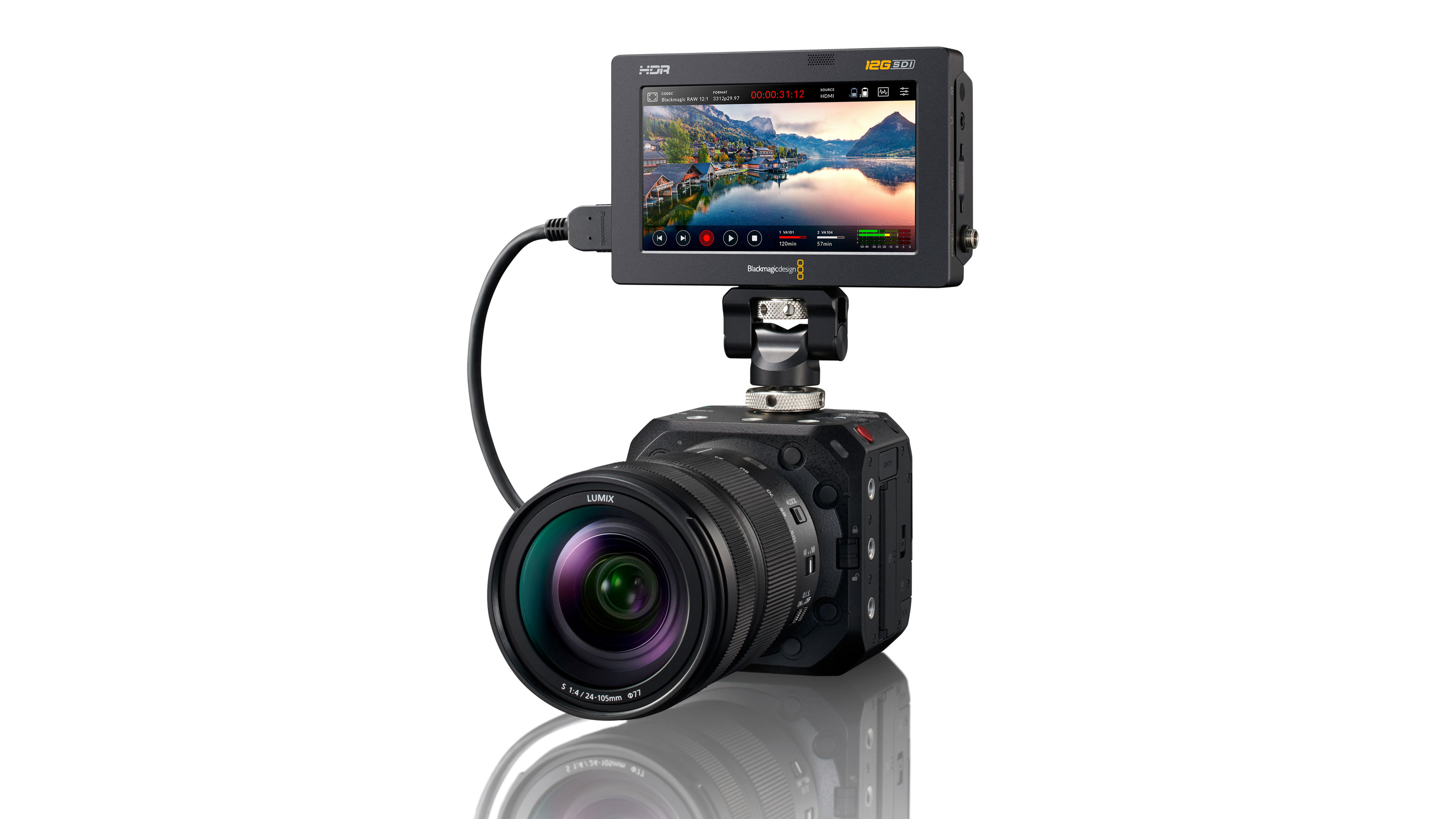Panasonic launches the Lumix BS1H full frame 'box' camera to join the BGH1
The new Panasonic Lumix BS1H is an affordable static camera for remote filming of events and multi-camera setups.

Panasonic has extended its video camera range with a new full frame ‘box camera’ designed mainly for static multi-camera recordings of events and gatherings.
The new Panasonic Lumix BS1H looks almost identical to the existing Lumix BGH1 box camera on the outside and follows the same design principle, with a modular body purpose made for remote recording installations, but this time with the extra image quality of a full frame sensor rather than the Micro Four Thirds sensor in the BGH1.
The Lumix BS1H is interesting in a couple of respects. Its design reflects a fast-growing sector of the video market, as events are increasingly being streamed and recorded for remote audiences, and not just nationally important events, but local church services, for example.
The second interesting thing is the price! Costing just £2,999 (US pricing to be confirmed), the BS1H is in the same ballpark as existing full frame mirrorless video cameras – but of course you have to add in the cost of lenses, battery and an external monitor if required – though the BS1H can be controlled wirelessly by its companion app, and supports PoE (it can be powered by an ethernet connection).
Panasonic Lumix BS1H key features
The Lumix BS1H shares much of the tech in the existing Lumix S1H, including its 24.2-megapixel 35mm full-frame CMOS sensor. This has an OLPF (Optical Low Pass Filter) to suppress moire and false colour, and has Dual Native ISO – it switches between two different noise circuits for different ISO ranges – with a maximum setting of ISO 51200.
The BS1H offers 6K full-area recording at 24p or 5.4K at 30p (both in a 3:2 ratio) or 5.9K at 30p in 16:9. It offers full area 4:2:2 10-bit 4K 30p recording in H.264, though 10-bit 60p 4K/C4K HEVC video recording means switching to Super 35mm mode. The VFR (Variable Frame Rate) mode offers C4K/4K (60 fps, maximum 2.5x slower in 24p) and FHD (180 fps, maximum 7.5x slower in 24p).
There are some restrictions on frame coverage and frame rates, then, as with any video camera, but there’s one limitation the BS1H does not have. Its internal active cooling system means it can offer unlimited video recording, without the heat build-up that can affect regular mirrorless video cameras. This is ideal for the BS1H’s intended use as a live recording and streaming camera.
The best camera deals, reviews, product advice, and unmissable photography news, direct to your inbox!
What’s especially interesting is that it offers not one, but two raw workflow options via HDMI: [5.9K] / [4K] / [Anamorphic (4:3) 3.5K] 12-bit raw video in Apple ProRes RAW on the Atomos Ninja V, and Blackmagic RAW on the Blackmagic Video Assist 12G HDR.
Live streaming is taken care of with an IP streaming function via a PC connection over wired LAN, and the BS1H can stream 4K 60p (50p) video in H.265, which provides 2x higher image quality at the same bitrate as H.264.
Connectivity options include USB 3.1 Type-C, 3G-SDI (BNC) , HDMI Type-A, Genlock IN (BNC) and Timecode IN/OUT (BNC) functions and Power over Ethernet+ (PoE+) . It will also be possible to control up to 12 sets of BS1H cameras using the Panasonic PC software LUMIX Tether for Multicam software.
The BS1H uses Panasonic’s DFD contrast autofocus system which the company says has advanced deep learning technology to set precise focus on fast moving subjects, including humans and animals even if they are moving fast.
It can record internal to two SD card slots, but you will need to buy your own battery if you want to use the BS1H as a handheld camera. It can be used in this role if kitted out with an external monitor, but Panasonic points out that the existing Lumix S1H is probably better as a handheld camera.
One key point is that the Lumix BS1H uses L-mount lenses, whereas the existing Lumix BGH1 is a Micro Four Thirds camera. This means that although Panasonic's two 'box' cameras have a near-identical design and purpose, the lenses are not interchangeable – they use two entirely different lens systems.
Panasonic Lumix BS1H price and availability
The Lumix BS1H is a qualifying product for the LUMIX Pro program, and will be available from mid-November at a price of $3,499 in the US, £2,999 in the UK and AU$5,299 in Australia.
See our full Panasonic Lumix BS1H review
Read more:
• Best cinema cameras
• Best cameras for streaming
• Best PoE cameras
• Best PTZ cameras

Rod is an independent photography journalist and editor, and a long-standing Digital Camera World contributor, having previously worked as DCW's Group Reviews editor. Before that he has been technique editor on N-Photo, Head of Testing for the photography division and Camera Channel editor on TechRadar, as well as contributing to many other publications. He has been writing about photography technique, photo editing and digital cameras since they first appeared, and before that began his career writing about film photography. He has used and reviewed practically every interchangeable lens camera launched in the past 20 years, from entry-level DSLRs to medium format cameras, together with lenses, tripods, gimbals, light meters, camera bags and more. Rod has his own camera gear blog at fotovolo.com but also writes about photo-editing applications and techniques at lifeafterphotoshop.com




